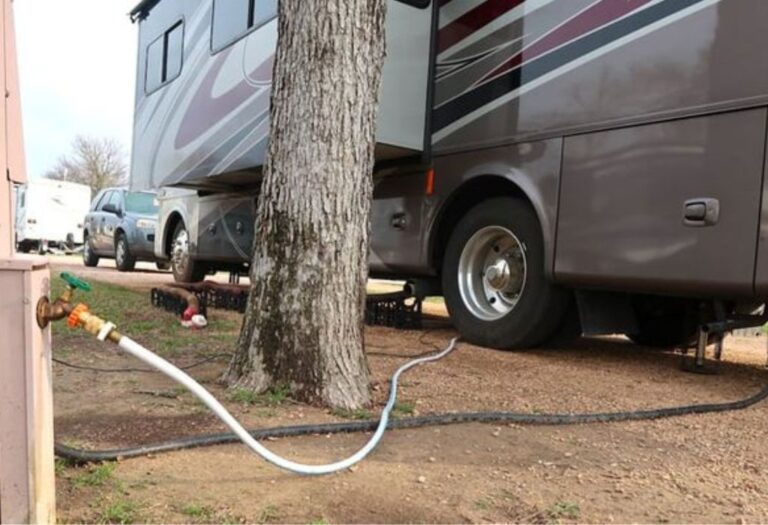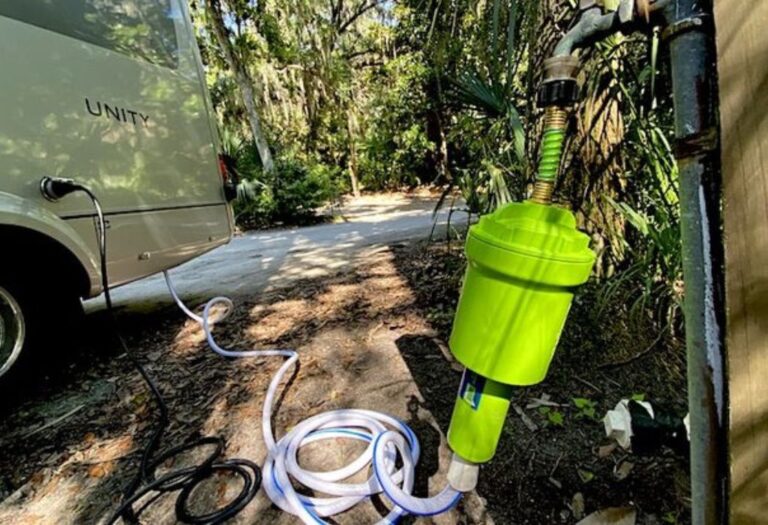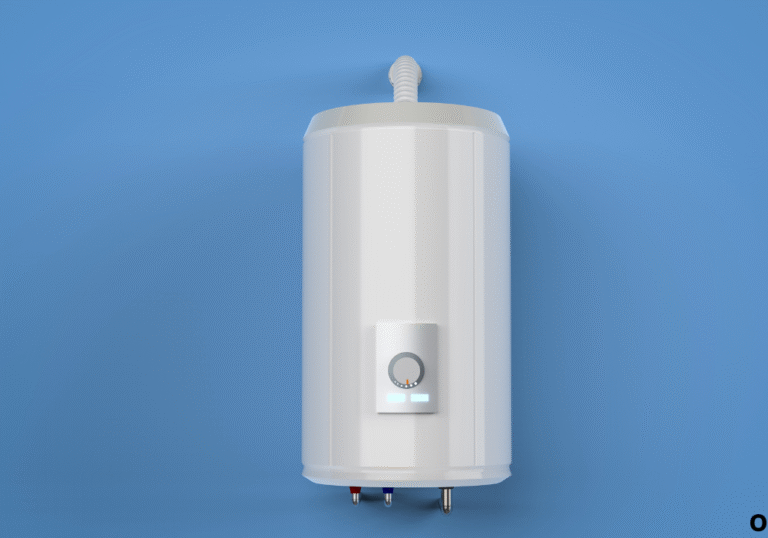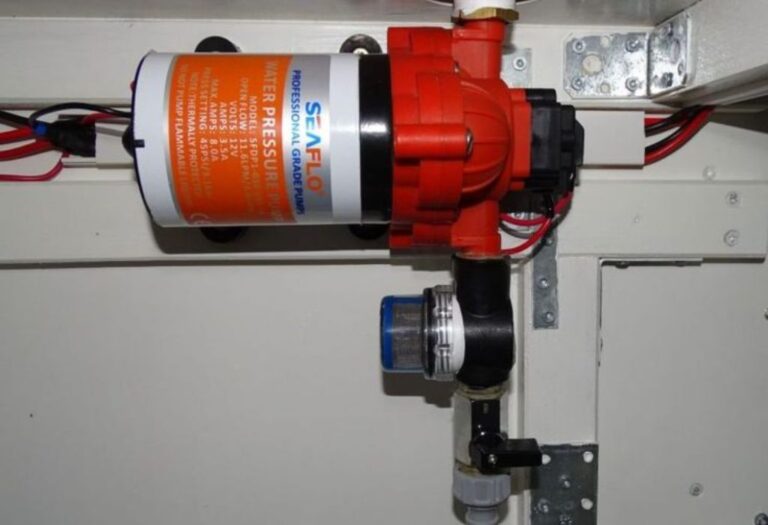When Do You Use the Water Pump in an RV? Explained Clearly
Running water is one of the greatest luxuries of RV living. Whether it’s taking a hot shower in the middle of nowhere or washing dishes after dinner, that steady stream of water depends entirely on one small but powerful device — the RV water pump.
For new RV owners, one of the most common questions is: “When do you use the water pump in an RV?” The answer might seem simple, but timing, setup, and understanding your plumbing system all play a role in preventing damage and keeping your water flowing efficiently.
This guide goes deep into how RV water pumps work, when to use them, when to keep them off, and how to maintain them for long life. Whether you’re dry camping, hooked up at a full-service campground, or winterizing for storage, you’ll find every detail you need right here.
What Is an RV Water Pump and How It Works
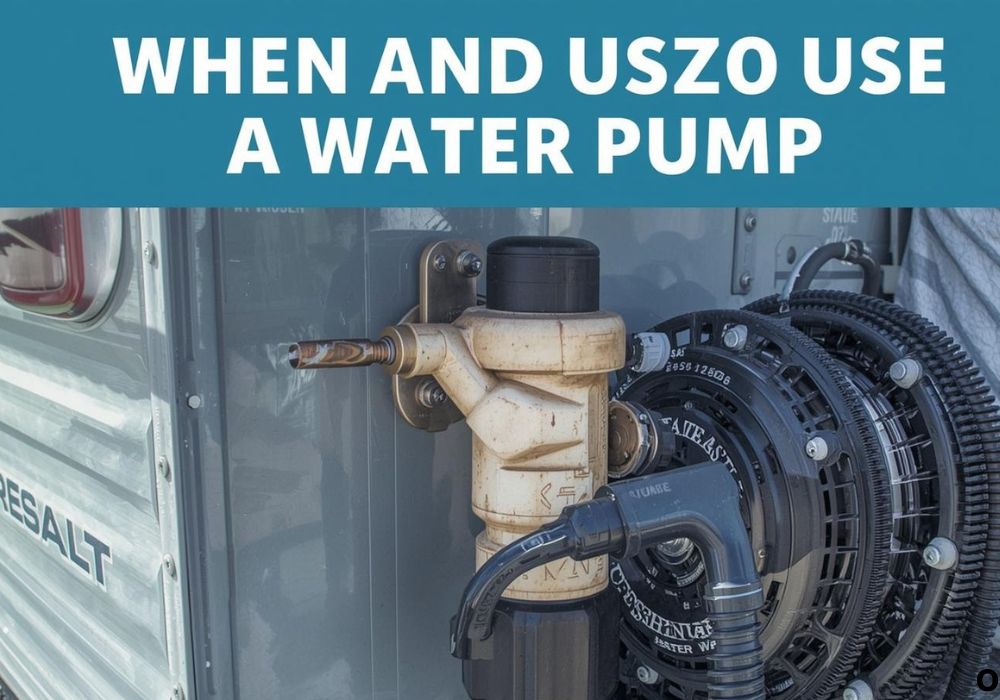
An RV water pump is a 12-volt electric pump that pressurizes water throughout your RV. It draws water from your freshwater tank and delivers it to your sinks, shower, and toilet whenever you open a faucet.
The pump operates on a pressure-sensitive switch. When the water system loses pressure (for example, when you open a tap), the switch activates the motor, which pushes water through the lines. Once you close the faucet and pressure builds up again, the pump automatically shuts off.
Most RV pumps deliver between 35–55 psi (pounds per square inch) of pressure — roughly equivalent to household plumbing. Typical flow rates range from 2.5 to 5.5 gallons per minute (GPM) depending on model and RV size.
This automatic start-and-stop system keeps your water consistent, energy-efficient, and ready for use even off-grid.
When Do You Use the Water Pump in an RV
You’ll use your RV’s water pump any time you need running water without being connected to city water. Here are the main situations:
1. Boondocking or Dry Camping
When you’re camping off-grid — with no water hookups available — the pump becomes essential. It draws water from your onboard freshwater tank, allowing you to shower, cook, and clean just like at home.
2. Traveling or Overnight Stops
While parked at rest areas or gas stations, you can turn on the pump to use your toilet or wash your hands. It gives you full water access on the road without relying on hookups.
3. During Sanitation or System Cleaning
When sanitizing your RV’s water system, you’ll use the pump to circulate a bleach or sanitizing solution through the pipes, ensuring all lines are disinfected.
4. Testing and Leak Checking
After maintenance or replacing plumbing parts, the pump helps pressurize your system to check for leaks, proper seals, and correct fittings.
5. Using Appliances
Some RV appliances (like washing machines, dishwashers, or icemakers) depend on water pressure from the pump when city water isn’t connected.
In short: if you’re not plugged into a city water connection, the water pump provides all the pressure your RV needs.
When You Don’t Need to Use the Water Pump

There are also times when keeping the pump off prevents unnecessary strain or damage.
1. When Connected to City Water
Most campgrounds and RV parks provide pressurized city water hookups. Once you connect your hose to this supply, the external pressure feeds water directly into your RV’s plumbing.
In this case, leave the pump off — the campground’s system provides all the pressure you need. Running both at once can stress your fittings or cause leaks.
2. During Winterization or Storage
When storing your RV for winter, you’ll either drain or fill the system with antifreeze. The pump should remain off (unless you’re actively circulating antifreeze). Leaving it on can cause it to cycle dry, which burns internal seals.
3. When Refilling or Draining the Freshwater Tank
Let gravity or your external fill port handle refilling. Don’t use the pump to push water into itself — it’s designed to move water out, not in.
4. When Hooked Up to Pressurized Systems
If you use an external pump or pressure regulator, your onboard pump can stay off to avoid dual pressurization.
5. While Servicing or Repairing Plumbing
Always disconnect power from the pump when performing maintenance to prevent accidental activation and water damage.
Step-by-Step: How to Use the RV Water Pump Correctly
Using the pump isn’t complicated, but doing it correctly prevents wear, leaks, and dry runs.
- Check Your Freshwater Supply
Make sure the freshwater tank has enough water. Running the pump dry (without water) can overheat and damage the internal diaphragm. - Close All Faucets
Before turning it on, ensure all taps, shower valves, and drains are closed. - Turn on the Pump Switch
The switch is often near the kitchen sink, bathroom, or control panel. Once flipped, the pump starts pressurizing the system. - Wait for Pressure to Build
You’ll hear the pump running briefly. When it stops, that means the system has reached full pressure. - Open a Faucet
Turn on a faucet to release water. The pump should immediately restart and deliver steady flow. - Turn Off the Pump When Finished
If you’re leaving the RV or connecting to city water, always switch off the pump.
Done correctly, this ensures consistent flow and protects the motor.
How to Know If Your Water Pump Is Working Properly
A properly functioning RV pump runs smoothly, quietly, and stops once pressure is restored.
Signs of correct operation include:
- Strong, steady water flow at all faucets
- The pump stops automatically after you close valves
- Minimal humming or vibration during operation
- No pulsing or “stuttering” at low flow
If you notice continuous running, sputtering, or weak flow, it’s time to inspect your system for leaks, clogs, or low voltage.
Understanding the Plumbing Layout
Your RV’s water system consists of three main parts:
- Freshwater Tank: Holds clean water for off-grid use.
- Water Pump: Pulls water from the tank and sends it through pressurized lines.
- Distribution Lines: Carry water to faucets, shower, and toilet.
When connected to city water, the pump sits idle, and external pressure pushes water through these same lines. When disconnected, the pump takes over instantly — it’s a seamless transition.
This dual-mode design lets RVers enjoy continuous water supply whether hooked up or off-grid.
Water Pump Electrical and Pressure Science
The typical RV water pump runs on a 12-volt DC circuit and draws between 4–8 amps. It’s powered by your RV’s battery bank or converter.
Inside, a diaphragm chamber and oscillating valves push water forward while preventing backflow. The system’s pressure switch triggers the motor when water pressure falls below a set limit (usually 35 psi).
When the system reaches max pressure (around 45–55 psi), the switch cuts power to stop the pump. This cycle repeats automatically, giving you a responsive and energy-efficient flow.
Maintaining correct voltage (12.6–13.8V) is critical. Low voltage leads to weak pressure, overheating, and early failure.
Common Mistakes RV Owners Make with Water Pumps
Even experienced RVers sometimes misuse the pump. Avoid these common errors to extend its life:
- Leaving It On All the Time: Constant operation risks flooding if a leak forms while you’re away.
- Running It Dry: The diaphragm isn’t designed to move air — always keep water in the tank.
- Ignoring Small Leaks: Even a drip keeps the pump cycling on and off, wearing out the motor prematurely.
- Using the Wrong Pressure Regulator: Too much external pressure can damage fittings.
- Skipping Maintenance: Dirt and debris in the inlet screen can choke water flow.
Proper habits can double your pump’s lifespan and reduce costly repairs.
Noise and Vibration: Why Pumps Hum or Rattle
A little noise is normal — the motor vibrates as it builds pressure. But loud knocking or hammering usually means loose mounts, rigid pipes, or trapped air.
Fix noise by:
- Mounting the pump on rubber isolators
- Replacing hard lines with flexible braided hoses
- Adding a small accumulator tank to smooth flow
- Tightening fittings and securing hoses
Quiet operation isn’t just comfort — it’s a sign your pump and lines are properly aligned.
Tips for Efficient Water Pump Use
Smart use equals longer life and less battery drain.
- Turn it on only when using water.
- Add an accumulator tank to minimize frequent cycling.
- Check filters regularly. Dirt buildup restricts flow and makes the pump work harder.
- Turn it off during travel to avoid leaks from vibration.
- Don’t overload electrical circuits — the pump should be on its own fused line.
Small habits make a big difference in both performance and longevity.
When You Should Keep the Pump Running
Sometimes, keeping the pump on continuously is acceptable.
If you’re dry camping for long stretches or sharing water use between multiple fixtures (like shower and sink), keeping it on ensures consistent pressure.
You may also need to keep it active during sanitization, tank flushing, or testing after maintenance. The key is to supervise — never leave it running unattended.
Troubleshooting RV Water Pump Problems
Every pump eventually needs some attention. Here’s how to diagnose the most common issues:
1. Pump Won’t Start
- Check the fuse or circuit breaker.
- Verify the switch and 12V power connection.
- Test battery voltage — low voltage prevents startup.
2. Pump Runs Constantly
- A leak or open faucet keeps pressure from building.
- A faulty check valve or air in the lines may also cause cycling.
3. Weak or Pulsating Flow
- Clean or replace the water filter.
- Check for air trapped in the lines.
- Inspect intake hoses for cracks or loosened fittings.
4. Noisy Operation
- Mount vibration pads under the pump.
- Add flexible hoses or an accumulator tank.
5. No Flow Despite Pump Running
- Prime the system. Fill the tank, open faucets, and run the pump until steady water flows.
- Ensure the inlet valve isn’t closed.
6. Pump Won’t Shut Off
- Pressure switch or diaphragm may be worn. Replace or rebuild the unit.
Routine inspection after every trip prevents these issues from becoming major failures.
Maintenance Tips for Long-Term Pump Health
Keeping your water pump in top shape takes minimal effort.
- Clean the inlet filter every few weeks.
- Flush the freshwater tank to remove algae or mineral buildup.
- Inspect hoses and clamps for leaks and replace if brittle.
- Drain before freezing temperatures — ice expansion cracks fittings.
- Use non-toxic RV antifreeze during winter storage.
- Lubricate seals with manufacturer-approved products.
A properly maintained water pump can last 7–10 years, far beyond the average 3–5-year replacement rate.
Safety Precautions for Using the Pump
Safety should always come first when dealing with pressurized systems.
- Never run dry. Air circulation inside the diaphragm burns out seals.
- Turn off before leaving the RV. A small leak could flood the interior.
- Monitor for overheating. If the pump housing feels hot, shut it down.
- Use correct wiring gauge (usually 12 AWG or thicker) to prevent overheating wires.
- Install a pressure regulator for external hookups.
These precautions protect both your RV’s plumbing and your investment.
Power Management and Electrical Efficiency
Since the pump runs on 12V DC power, it directly affects your battery usage while boondocking.
Typical draw: 4–8 amps.
At 5 amps continuous use, a 100Ah battery would last roughly 20 hours if used solely for the pump.
Reduce power drain by:
- Turning off the pump when idle.
- Using LED lighting and low-energy appliances.
- Recharging with solar or generator every day.
Proper power management ensures uninterrupted water supply even on long off-grid adventures.
Understanding Water Pressure and Flow Rate
Your pump’s pressure rating determines how well water flows through multiple fixtures.
- Low-Flow Pumps (2.5–3.5 GPM): Best for small campers or solo use.
- Mid-Range Pumps (4.0–5.0 GPM): Ideal for standard RVs with 2–3 fixtures.
- High-Flow Pumps (5.5+ GPM): Suitable for larger rigs or simultaneous shower and sink use.
If your pump seems weak, check for sediment buildup or undersized hoses restricting pressure.
RV Water Pump Components Explained
A modern RV pump includes several key parts:
- Motor: Converts electrical energy into mechanical force.
- Diaphragm Chamber: Moves water via flexible membrane.
- Inlet/Outlet Valves: Direct water flow and prevent backflow.
- Pressure Switch: Turns motor on and off automatically.
- Housing and Mounts: Secure pump and reduce vibration.
Each part requires cleanliness and correct installation for efficient function.
Priming and De-Priming the System
Priming fills the pump chamber with water so it can generate pressure.
To prime:
- Fill the freshwater tank.
- Open the nearest faucet.
- Turn on the pump.
- Let it run until steady water emerges.
To de-prime for storage, simply drain the system and open all low-point valves. This prevents bacteria and freezing damage.
How to Sanitize the RV Water System Using the Pump
- Mix one-quarter cup of household bleach per 15 gallons of tank capacity.
- Pour the mixture into the freshwater tank.
- Fill the tank completely with clean water.
- Turn on the pump and open all faucets until you smell bleach.
- Let it sit for 12 hours, then drain and flush thoroughly.
This method uses the pump’s pressure to push sanitizer through every line, keeping your water system safe and clean.
RV Water Pump Lifespan and Replacement Signs
A good-quality pump lasts years, but signs of wear eventually appear:
- Frequent short-cycling (turning on/off rapidly)
- Reduced pressure despite full battery
- Leaking water around housing
- Intermittent starting or electrical smell
When repairs become frequent or performance drops below 50%, replacement is the best long-term solution.
Can You Upgrade Your RV Water Pump?
Yes — upgrading improves both pressure and noise control.
Look for pumps featuring:
- Variable speed motors (adjust automatically to demand)
- Built-in bypass valves
- Thermal protection sensors
- Quieter operation below 55 decibels
Brands like Shurflo, Flojet, and Seaflo dominate the RV market with reliable, serviceable designs.
Water Conservation Tips While Using the Pump
Since the pump draws from a limited freshwater tank, conservation extends your stay off-grid.
- Install low-flow aerators on faucets.
- Turn off water while soaping hands or shampooing.
- Collect greywater for secondary uses (if legal).
- Use biodegradable soaps that require less rinsing.
- Take “Navy showers” — rinse, lather, rinse again.
Efficient water habits reduce strain on both pump and tank.
RV Water Pump Myths Debunked
Myth 1: You must leave the pump on all the time.
False. Turn it off when not using water.
Myth 2: Pump noise means it’s failing.
Not always. Noise may just be vibration or air bubbles.
Myth 3: Any pump can fit any RV.
Wrong. Always match flow rate and pressure to your system.
Myth 4: City water and pump can run together safely.
Dangerous. Dual pressure can rupture fittings.
Myth 5: Priming is optional after storage.
Incorrect. Pumps need priming every time they’ve been drained.
FAQs About RV Water Pumps
Can I use my pump and city water at the same time?
No. City water already provides pressure — running both can cause leaks or bursts.
Is it safe to leave the pump on overnight?
Only if you’re awake and using water regularly. Otherwise, turn it off.
How do I know if the pump lost prime?
You’ll hear it running but no water comes out. Re-prime by filling the tank and opening faucets.
Why does my pump pulse during low-flow use?
It’s cycling rapidly due to pressure loss. Adding an accumulator tank fixes this.
Can I use the pump while the engine is running?
Yes, it draws from the RV’s house battery, not the engine system.
Can a pump overheat?
Yes. Running continuously without pressure shutoff causes heat buildup — always investigate constant cycling.
How long should the pump run to pressurize the system?
Usually 10–20 seconds, depending on tank size and line volume.
Does altitude affect water pressure?
Slightly — higher elevations reduce flow rate marginally, but the difference is minor.
Conclusion – Smart Water Management for Every RV Adventure
The RV water pump may be small, but it plays one of the most vital roles in your comfort on the road. It provides independence from hookups, powering showers, sinks, and toilets wherever your travels take you.
Use the pump only when disconnected from city water or during sanitization. Turn it off when idle, and never let it run dry. Regular cleaning, proper priming, and pressure checks ensure it performs flawlessly trip after trip.
When maintained correctly, your RV water pump delivers years of dependable service — keeping fresh water flowing whether
I’m David R. Coleman, the founder, lead writer, and lifelong tool enthusiast behind GarageToolPro.com. With years of experience in automotive repair, woodworking, and home DIY projects, I created this platform to share practical tips, detailed tool reviews, and step-by-step guides that help mechanics, hobbyists, and homeowners get the job done right the first time.


